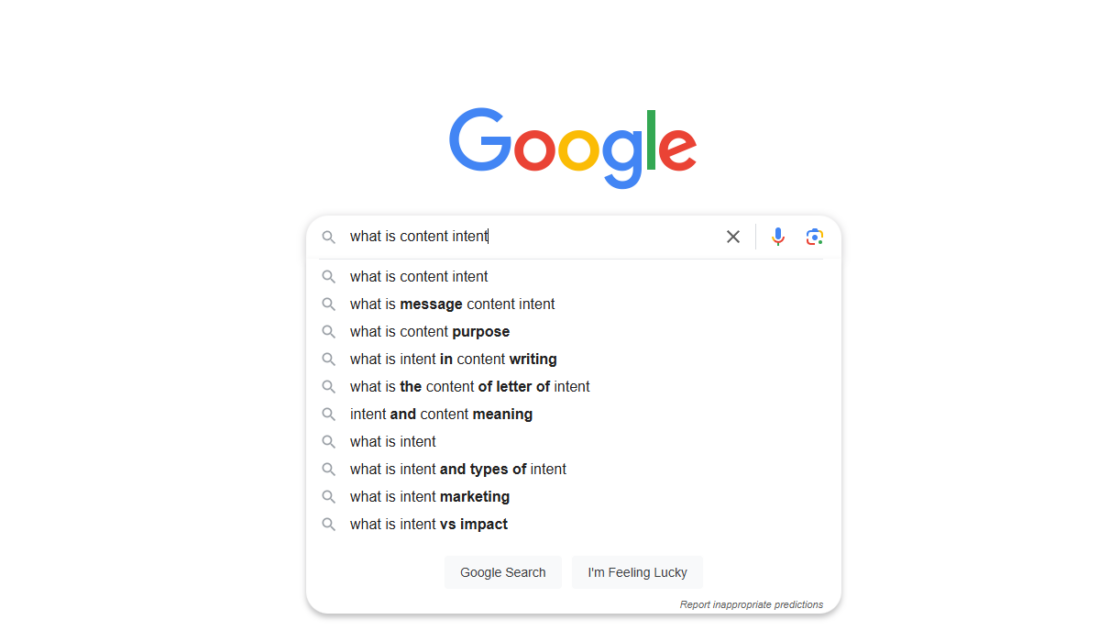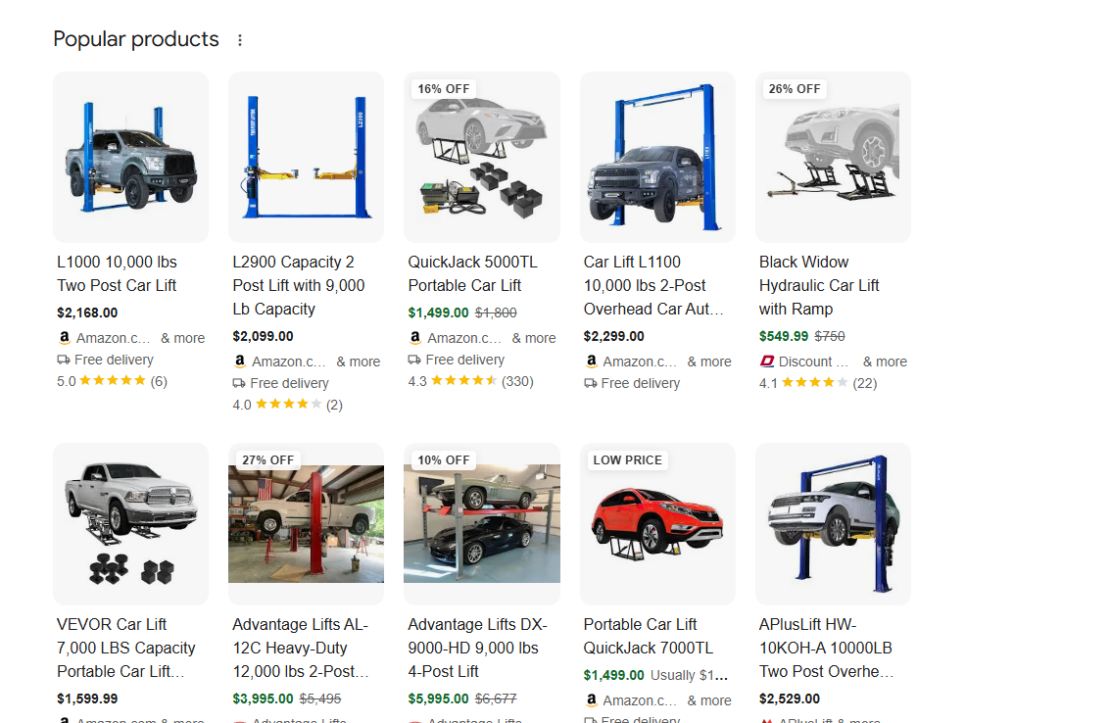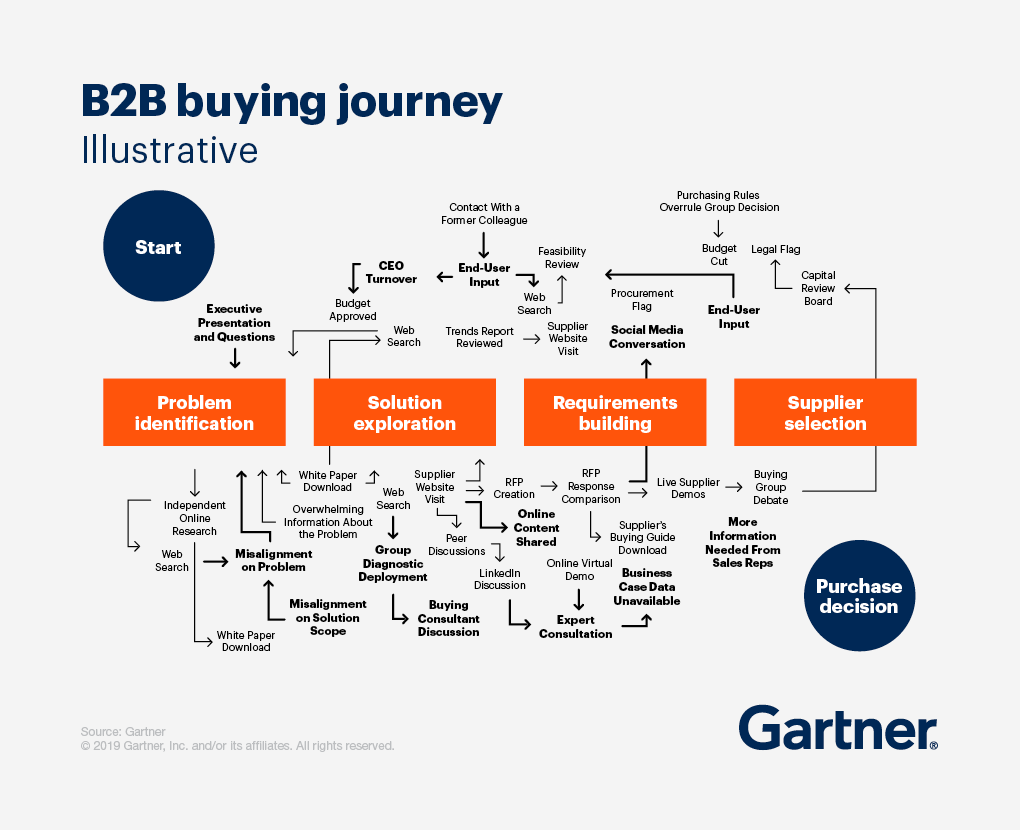Understanding Content Intent

Content creation is more than just putting words on a page and calling it a day. It’s about understanding who you’re writing for and what their needs are. Because the goal of many content pieces is to improve online visibility or increase website traffic, content creators must also determine which keywords to target and the search intent behind each keyword or query.
What Is “Search Intent?”
Every online user starts search queries with four primary intentions:
- To find answers to a specific question or topic or solutions to problems they’re experiencing.
- To research businesses, products, and services.
- To purchase products or services.
- To find a specific website or web page (like someone searching for Facebook or Reddit).
So, when content specialists brainstorm content ideas or develop outlines or briefs, one significant aspect of the research process is looking at the keywords the potential content pieces are targeting, and the intention online users have when searching for these terms.
In the SEO world, we categorize search intent in four ways: informational, commercial, transactional, and navigational.
Informational
“Informational” intent is when an online user is simply looking for answers to a question or researching a topic. Some long-tail keywords, such as “what is search intent,” are inherently informational. If any keyword string starts with who, what, when, where, why, or how, it’s going to be a keyword with an informational intent.
Commercial
When a user is researching businesses, products, services, or other solutions, the keywords they use will have a commercial intent. Many keywords that end with “contractor,” “company,” “business,” or “services” will most likely have a commercial intent.
Transactional
Transactional keywords are used by searchers who want to buy a product or service. Some “service” keywords may have a transactional intent. However, specific product names or category phrases like “automotive lift,” “lawnmower,” or “used cars” will have a transactional intent because the searches using these phrases are primarily looking to make a purchase.
Navigational
Navigational intent is when someone is looking for a specific website or web page or even one specific part of a website. So, “Progressive login,” “Amazon,” or “Reddit” are considered keywords with navigational intent.
Determining Keyword Intent
There are several ways to determine keyword intent. Many SEO specialists use tools like SEMrush, Ahrefs, or Moz to perform keyword research because these platforms provide insight into intent by marking certain phrases or words with an “I” for informational, “C” for commercial, “T” for transactional, or “N” for navigational.
However, I prefer to search for keywords and browse the SERPs myself because search engines (mostly Google) can change frequently, which I covered in this blog here. This strategy gives me better insight into what type of content is currently being prioritized. So, for example, if I search for a term and see that the results are a mixed bag of commercial and informational intent, my key takeaway is that I should be creating content for both intents.

Creating Content By Intent
You may have heard of the buyer journey, and you may have also heard that it’s more complicated than you were led to believe, especially with the B2B model. The buyer journey and search intent go hand in hand.

On the most basic level, the journey works like this:
- A person is looking for an answer to a question or a solution to a problem. In this stage, they are looking for unbiased informational content, such as blog posts, whitepapers, or eBooks.
- A person now understands the answer to their question or what solution they need for their problem. They are now looking for “the best solution” or “the best product.” Now, they are looking for “commercial” content, which could also be eBooks, blogs, whitepapers, webinars, videos, brochures, case studies, and essentially any content type that primarily aims to discuss a company’s products and solutions.
- A person has chosen the specific product or solution they’re looking for and is ready to purchase. They are looking for a mix of “navigational” and “transactional” content. Transactional content will primarily be web pages/product pages, while navigational content is hard to pinpoint but will almost always be a web page. Typically, navigational content is not a significant focus in content marketing because it has more to do with user behavior. Virtually any part of a website could be considered navigational, so one could say that the company’s website itself is a form of navigational content.
The Connection Between Search Intent & Buyer Journey
Companies interested in pursuing search engine optimization and/or content marketing should genuinely care about search intent because it directly connects to the buyer journey, which most people are already familiar with.
Most businesses new to the online landscape will start by building a website that contains information about the company’s offerings. The business may then begin to develop case studies to emphasize their impact and create blog content focusing on simple, informational topics that interest their target audience.
I know this is still a little broad and may even be too vague, so I’m going to build an example for you:
There is a new skin care company on the market (yes, another one! Just what the world needs!). They’ve already built a website with informative product pages. What’s next?
- That company may go the extra mile to perform clinical trials on one or more of their products. This would take time, but it would be a great example of commercial content that shows their products’ impact.
- In the meantime, the company could have an integrated product review feature that allows customers to share their experience with the product(s). This is another great example of commercial content because if a user isn’t quite sure what they want, they can at least see if this product is (or isn’t) well-liked.
- The company could also start posting blogs on skin care-related topics, specifically blog posts related to the ingredients found in their products. So, if a retinoid is a key ingredient, the company could share a blog post on the benefits of retinoids or when people should start using retinoids. They could even incorporate an infographic showing what retinoids do for the skin. This is an example of informational content. The reader may not be aware that they need that company’s product but they might be experiencing a problem, like detecting new fine lines, and they’re wondering how to resolve it. Now they know that retinoids might be a potential solution.
- The company might also ensure their product pages contain an in-depth ingredient breakdown, really showcasing how their product is different from others on the market (or to defend its cost). This type of content would be considered a mix of commercial and transactional, leaning more toward commercial.
- The company could create a competitor analysis case study, showing how their product compares to a similar product on the market based on customer feedback.
The bottom line is—if you’re a business trying to stand out in the online landscape, you need to have content that satisfies multiple search intents.
Common Intent Mistakes
Mixed-Intent Content
I’ve been to a few webinars and thought, “Oh cool! I can’t wait to learn how to fix this problem I’m having,” only to discover midway through the webinar that I’ve been tricked and the webinar is just focusing on how one specific software or platform can solve my problems.
Nobody likes that. If you’re going to create content that sounds informational, keep it informational and unbiased.
When developing informational content, think about how the reader is finding your content. If someone is searching for keywords like “what can help with fine lines” or “how to prevent wrinkles,” they’re looking for answers. And sure, a small population might want to immediately purchase literally anything they think could reduce the effects of aging. But, as I said, that is a small portion of the audience.
Focus on the facts first, and when you’re developing calls to action, don’t make them “buy our products today!” or anything else that might feel jarring to the reader. Instead, focus on “learn more” or “explore more solutions” as calls to action.
I’ve done mixed-intent content before and it just doesn’t work. Remember—they came to learn, not to purchase.
Emphasizing Sales & Leads
This ties in a bit with the previous section, but I’ve worked with many salespeople who have turned purely informational content into one giant ad for their products and solutions. While that type of content should be on a website, it’s not the only content that should be on the website.
If you’re having someone in your business review content, make sure they understand the goals/purpose of the content piece, which will help in the editing/review process.
Having informational content can help boost search visibility and build authority on topics related to your business. Will it help you get immediate leads? No. Will it help people see your website? Yes. Both leads and visibility are important in SEO. Without a visible website, no one knows you exist in the online landscape. Informational content is one of the keys to ensuring people are aware of your business.
Not Taking the Time to Understand Your Audience
At some point, you have to ask yourself if it’s even worth creating content. If you don’t know your audience, you won’t know what content to create. It’s really as simple as that. Take the time to understand who your audience is, what their problems are, and what type of information they’re trying to find in their search journey. Then, create content based on that. Don’t worry about what you think search engines want; worry about what your audience wants.
If you’re not sure where to start (because this type of research can be pretty challenging), talk to your sales team. When people call or submit contact form requests, what information are they requesting? Is that information on your website? If it’s not, it should be.
Being Biased
When you create content, you need to cover the topic thoroughly. Don’t leave out key bits of information because you don’t think it’s relevant to your business or it’s not 100% focused on products you sell or services you provide.
For example, when creating a content piece that covers the different types of commercial roofing options, don’t conveniently leave out metal or PVC just because your business doesn’t install them. Cover the topic comprehensively. Getting leads is important, but it’s even more important that they’re high-quality. If a reader discovers that a specific roofing system isn’t the right solution for them based on environment, budget, etc., then that’s that. They were never going to be a high-quality lead for you in the first place if they weren’t interested in the systems you install. Having unqualified leads frequently come through is just a waste of time for you and your sales team.
Leaving Out Key Information On Product (Transactional) Pages
I’m going to address the elephant in the room—pricing. You need to put pricing on product pages. It’s one of the first factors a reader wants to know. Yes, there are some specific situations where a product or solution is customized, so it may be difficult to provide an exact price. However, if you’re not in that situation, list the dang price already!
Again, leads are important, but high-quality leads are better. Do you really want 20 leads where people request quotes and then say, “Never mind,” or would you rather have 5 valuable leads where people are actually purchasing your product?

Beyond pricing, you’ll also want to include the following information on product pages:
- Specifications
- First-party images (no stock!)
- A general description that lists out key benefits and features
- Shipping time (if applicable)
- Customer reviews/ratings (if applicable)
- Factors that can be customized (if it’s a custom product)
This list isn’t exhaustive—every product is unique, so additional information may be needed on your product pages. This is another good opportunity to meet with your sales team to discover what information customers frequently ask for that’s missing from your product pages.
Missing the Mark on Internal Links
Internal links are meant to guide the reader to the next practical spot in their journey, so choose links that make sense.
Mistakes I’ve seen include:
- Incorporating homepage links throughout the blog. Homepage links are no longer needed. Most modern websites allow users to return to the homepage by clicking on the company’s logo from the main nav.
- Putting the same link in multiple times. If you’re highlighting a product on your website, you don’t need to link it more than once. The reader gets the message.
- Mixing intent with the internal links. If you create an informational content piece, you don’t necessarily need to link a product or service page. Likewise, if you have a commercial content piece, you don’t really need to link an informational content piece there. I know this is a bit black-and-white because there are certainly exceptions to that statement. Think about your internal link—where is that link taking readers to and do they need this information in the context of the article it’s being linked in?
Here is an example of an internal linking strategy I did. The content piece covered how to use a client’s product to perform stress mapping. So, the article is definitely informational but for a target audience that has likely already purchased the product or is specifically looking for a solution that allows them to stress map.
In the article, I linked the client’s stress mapping product. The article already discusses it, so it was important to link it in case readers wanted to learn more about the product before reading the entire article. I also linked an article that discusses the cosα method, a new variation of X-ray diffraction technology that some of the client’s customers aren’t aware of. This internal link allows them to learn more about that specific method, its benefits, and how it can help them achieve more accurate stress readings. Finally, I included a link that took readers to a page that allows them to request a free demo of the product; that way, they could see the stress mapping in action.
Wrong Call to Action
Calls to action aren’t giveaway phrases to include in content—you need to put some thought behind them. You have to consider where your reader is on their journey. Are they ready to purchase? Are they ready to learn more about a product? Do they need to explore other solutions first?
If you’re a forging manufacturer and you’ve created a content piece discussing the differences between forging and other metal forming processes, you don’t want to end the piece with “Request a quote today!” The reader may want to know more about the forging process because they still need to figure out if that’s the solution they need. In this situation, you would use a “learn more” call to action or some variant and guide them to other solutions or resources to help them continue their journey.
Comparatively, if you’re creating a buyers’ guide for different paints, you’d definitely want to include a more commercial call to action, as the types of people landing on this content piece are looking to purchase a specific type of paint, they’re just not sure what. You could even include a call to action inviting the reader to contact an application or product specialist for further assistance in selecting a product.
Find More Content Marketing Resources
If this is “your first rodeo,” know that you’re not alone. Content marketing is challenging, even if I talk about it like a simple task that anybody can do in no time at all.
You can visit Momentum’s blog for more content marketing (and general digital marketing) resources. A couple that I recommend reading next include: How to Perform a Content Audit, which will help you understand the metrics and guidelines I use when reviewing existing content on a website and identifying repurposing opportunities, and Using Author Profiles to Establish E-E-A-T, which touches on Google’s emphasis on Expertise, Experience, Authoritativeness, and Trustworthiness and how working with subject matter experts and assigning authors to your content can help build the credibility you need.
